Rise and fall method table 130774-Rise and fall method table pdf
• Fall propagation delay, t pf – time for output to fall by 50% • reference to input change by 50% • Rise propagation delay, t pr – time for output to rise by 50% • reference to input change by 50% noisserp exla•Ied (if input is step change) –t pf = ln(2) τ n –t pr = ln(2) τ p • Total Propagation Delay –t p = 035(τ nLets start with why Rise and Fall called so?Sep 27, 17 · hello dears!!!!!this short tutorials provides education about the rise and fall table in land surveying here we will learn how do we solve the rise and fa
Surveying And Leveling Lesson 10 Simple Levelling And Fly Levelling Methods
Rise and fall method table pdf
Rise and fall method table pdf-The RL is then found adding the rise to, or subtracting the fall from the reduced level of preceding point Arithmetic check Sum of BS – sum of F S = sum of rise – sum of fall = last R L – first RL fThis method is complicated and is not easy to carry out Reduction of levels takes more timeThe advantage of the rise and fall method is that it is the simplest method of booking and checking the calculations on site Figure 8 Diagrams showing booking Procedure This survey is booked as shown below It starts and ends on the same OBM Table 1 Rules of Booking



Rise And Fall Method Surveying Table Page 2 Line 17qq Com
A tunnel, being driven as part of a water supply scheme, is to be checked for possible subsidence of the roof line Levels were taken as shown in the Figure and Table Reduce the levels by (a) the rise and fall method and (b) the height of collimation methodFind out information about riseandfall table A circularsaw assembly in which the table, rather than the saw, is movable McGrawHill Dictionary of Architecture and ConstructionAncient method of boiling brine into pure salt in China Salt, also referred to as table salt or by its chemical formula NaCl, is an ionic compound made of sodium and chloride ions All life has evolved to depend on its chemical properties to survive It has been used by humans for thousands of years, from food preservation to seasoning
The Rise and Fall Method Both methods of booking the readings of a levelling run are the same That is, the first reading of any setup is a Back Sight and would be booked in the column labelled Back Sight The final reading taken on any setup is a Fore Sight and would be booked in the column labelled Fore SightApr 28, 12 · (2) Rise and fall system This system consists of finding out the difference in levels between two consecutivepoints by comparing each point with the preceding point Rise is indicated, if the staffreading is smaller and fall is indicated, if the staff reading is greaterThe Rise and Fall Method Both methods of booking the readings of a levelling run are the same That is, the first reading of any setup is a Back Sight and would be booked in the column labelled Back Sight The final reading taken on any setup is a Fore Sight and would be booked in the column labelled Fore Sight
Method 22 lab # 8 differential or fly levelling – reduce levels by rise and fall method 24 lab # 9 closed loop leveling 26 lab # 10 profile leveling (longitudinal sectioning & cross sectioning) 28 lab # 11 contouring – grid method 31 lab # 12 study of theodolite 32 lab # 13 horizontal angle measurement "closing the horizon" 37A rise and fall clause in the building contract is a way in which the risk of fluctuating building costs can be shared with a client, rather than be borne solely by the builder Such a clause provides that, after the contract has been signed, the builder can pass on to the client, increases and reductions in the cost of performing work ChangesThe tutorial sheds light on the rise and fall table in land surveying Get some useful tricks to resolve the rise and fall table Rise and fall method is applied to resolve the levelling to detect the variation in elevation and elevation of points By resolving this table, it is possible to work out the reduced level of each point captured at staff rod with leveling machine
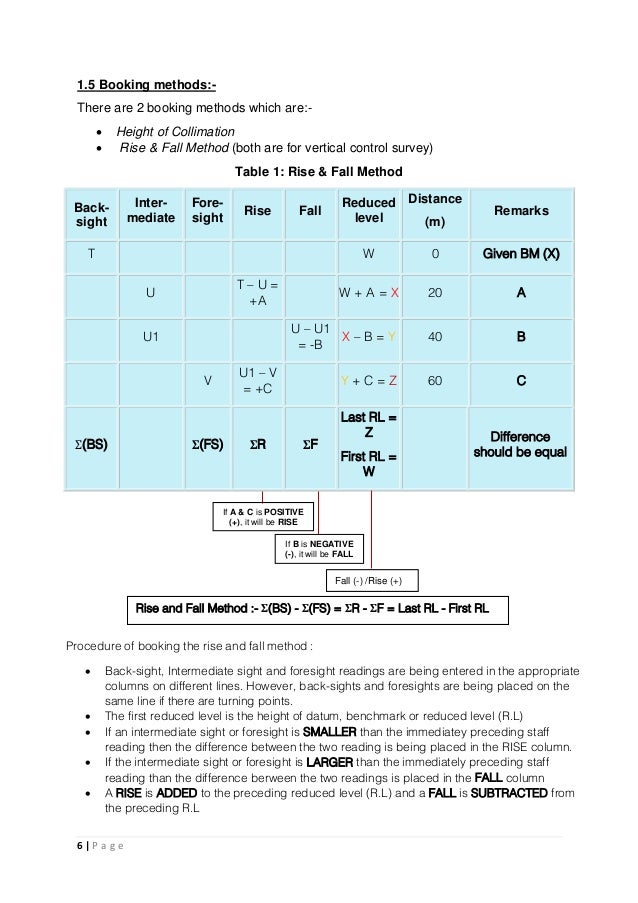


Site Surveying Almost 1



What Is Height Of Instrument And Rise Fall Method Of Levelling
PDF On Sep , 16, Bharat Gadakh published Dumpy level methods Rise and fall ,Collimation methods Find, read and cite all the research you need on ResearchGateDifferences between height of collimation method and rise and fall method There are two Methods of Levelling 1 Height of collimation system 2 Rise and fall system Height of collimation system Vs Rise and fall system 1 It is rapid as it involves few Calculation It is laborious involving several calcuationRISE AND FALL METHOD The following table shows a page of level book for rise and fall method There are seven columns The first three columns are exactly same as in the previous table Instead of columns HC there are two columns marked rise and fall respectively The last two columns are also identical with previous table Back sight (1) Inter sight



Land Survey Rise And Fall Table Solution Youtube
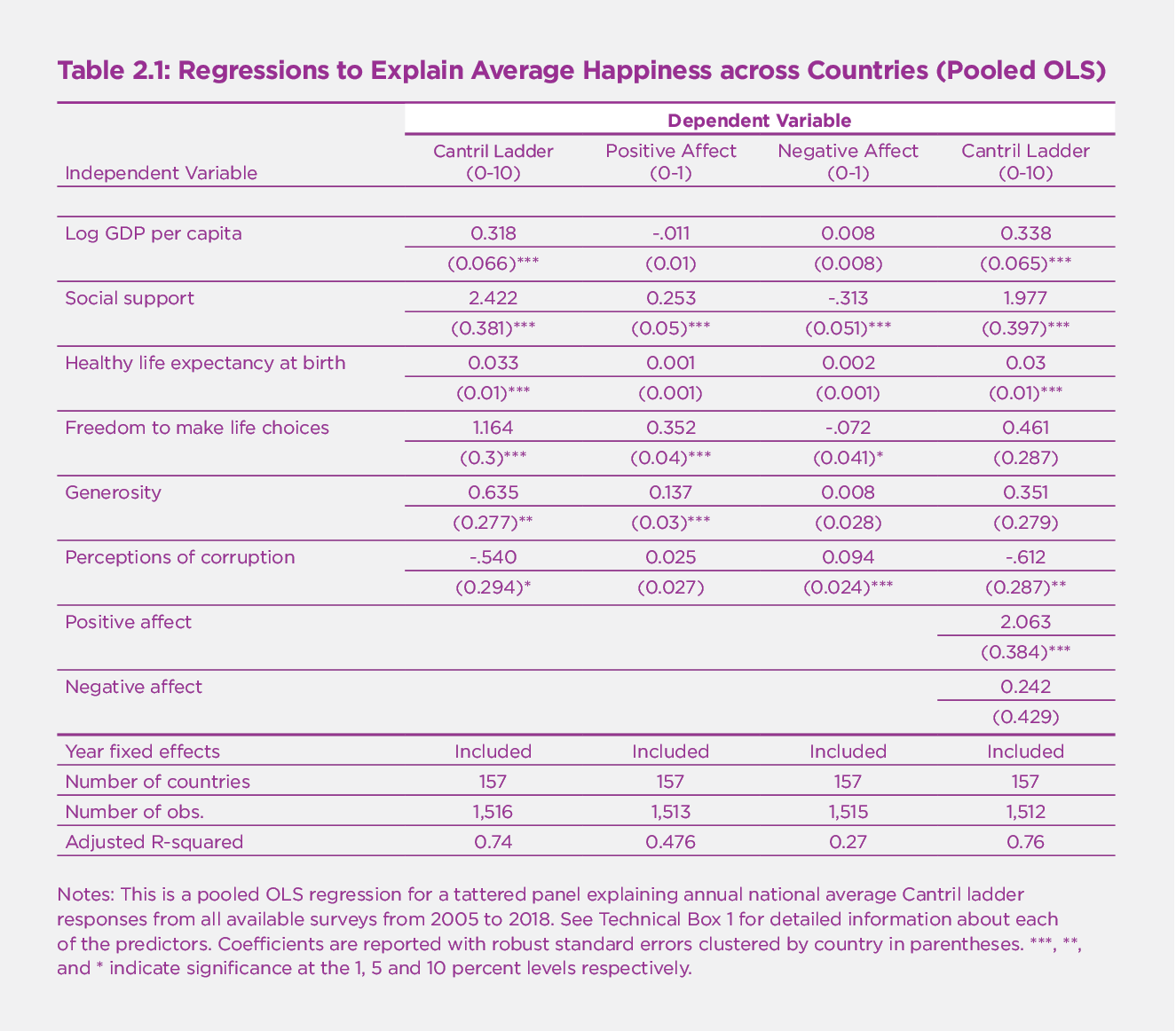


Changing World Happiness The World Happiness Report
Rise is the motion of the follower away from the cam center, dwell is the motion during which the follower is at rest;All Sports All Access All Yours $ 29 99 Monthly Study Hub Projections, Ownerships, Player Ratings, Trends, Sims, Data MONTHY $ Credit to FantasyCrunchercom!Apr 24, · A video explaining the method used to calculate heights of points measured in a survey by using the Rise ad Fall method



Levelling Gerneral Priciples



Levelling
Question Answer The Question Using Method Of Rise And Fall Method *To Calculate The Allowable Misclosure,please Use This Formula That Is 5(sqrt N) *n Is The Changing Point Of The Auto Level This problem has been solved!Jan 15, 18 · Excel for Land Surveyors is a Hub for sharing helpful spreadsheet tools and applications to be used in the surveying field If you are new to the Excel Support for Land Surveyors Group, please start by adding a discussion and introducing yourself to the community!If an intermediate sight or foresight is larger than the immediately preceding staff reading then the difference between the two readings is place in the fall column A rise is added to the preceding reduced level (RL) and a fall is subtracted from the preceding RL



What Is The Rise And Fall Method In Surveying Quora
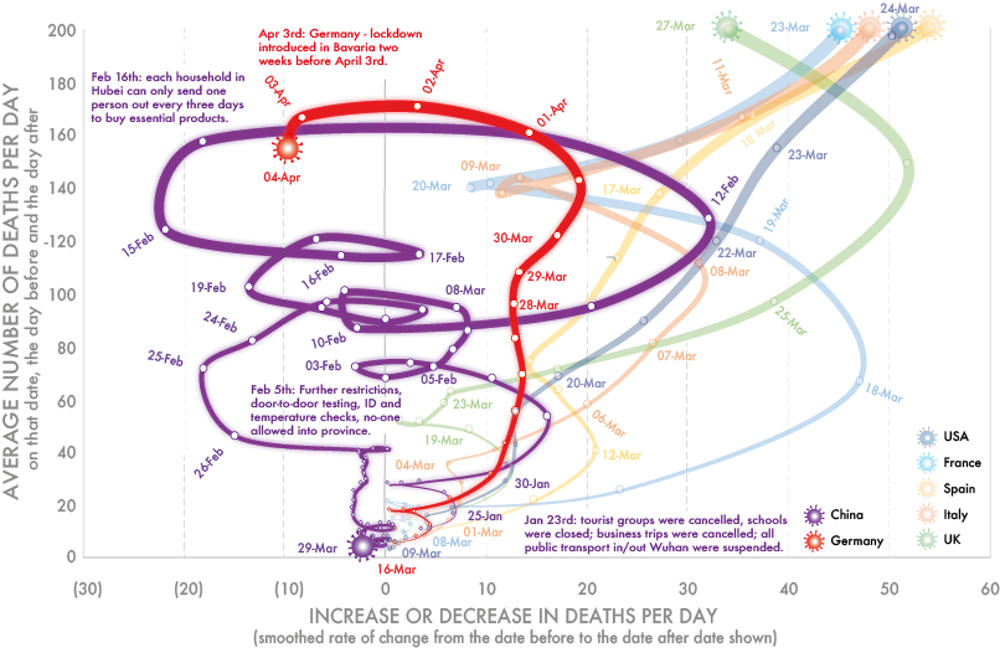


Three Graphs That Show A Global Slowdown In Covid 19 Deaths
(Makes us $999 value) GPP Lineup Core Builds (Building Blocks) Cash Lineup Core BuildsBooking levels and calculating Reduced Levels using HPC and Rise and Fall methods on the same page Final Coordinates from a Closed Traverse Vertical curve design data Horizontal curve design data for Offsets from Long Chord, Deflection angles andThis video shows you how to calculate out the Rise and Fall Level Book so that you are able to establish the Reduced Level of the point that you have surveye


Mogul Flight 4 Trajectory



6omzdm 9aik 2m
Angle Run Scale Rise 437 Pitch Angle ° Slope 364% Slope Length 1277 Area 0262m² Directly Measure Roof Pitch Angle and Calculate Pitch and Angle on Phone or Tablet Set Bevel Gauge directly from phone or tablet screen Roof Angles and Rafter PlumbCuts Visit this page on your Phone to directly measure pitch and anglesJul 24, 15 · Table of previous example (Rise and Fall method) 11 Fly levelling Performed when the work site is very far away from the bench mark The surveyor starts by taking BS at BM and proceed towards worksite till he finds a suitable place for temporary BMQuestion 2 A Tunnel, Being Driven As Part Of A Water Supply Scheme, Is To Be Checked For Possible Subsidence Of The Roof Line Levels Were Taken As Shown In The Figure And Table Reduce The Levels By (a) The Rise And Fall Method And (b) The Height Of Collimation Method 5 268 945 REMARKS BS IS FS RISE FALL REDUCED LEVEL 3337 A (TBM) Floor Level B
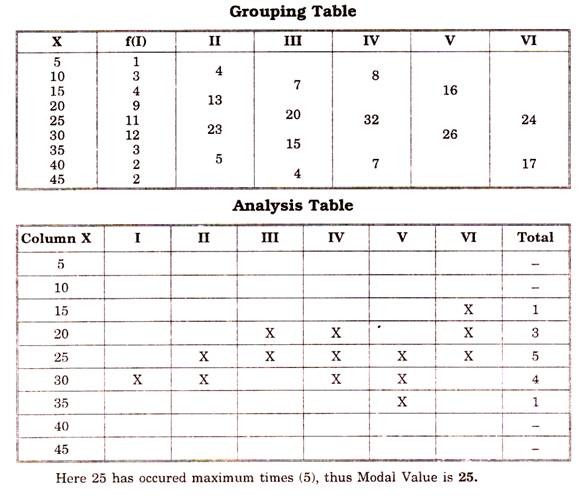


How To Calculate The Mode In 2 Different Series



Differential Or Fly Levelling Rise And Fall Method
Rise and Fall Index Details of recently published Rise and Fall indices from ABS are as follows Index 6427 Tables 17, Ref No 3101 Victoria to December The indexes are the "as first published" indices by the Australian Bureau of Statistics referred to in Section 199 Provision for Adjustment of Contract Sum of the StandardThis methods starts by subtracting staff readings (former readinglater reading) For example at level staion 1 we have 5 points(BS =1352;FS=TP1 =1464) Points are BS, three ISs and FS So for the rise and fall solution we do as follow 1352–1761= 0409 Fall



Pledging Patents For The Public Good Rise And Fall Of The Eco Patent Commons Published In Houston Law Review
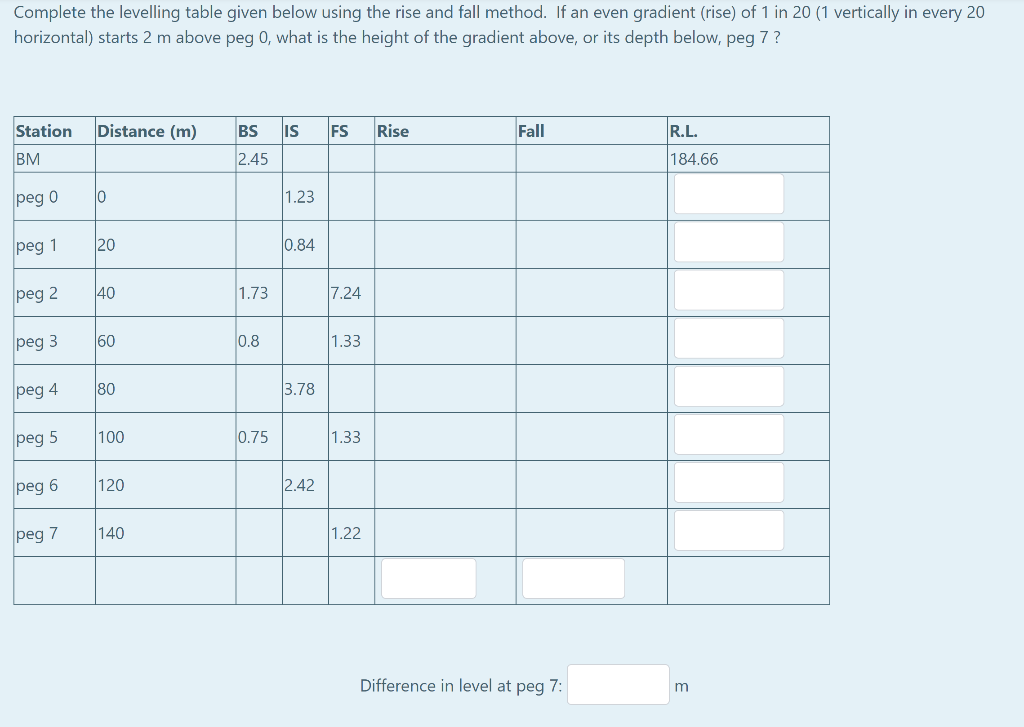


Solved Complete The Levelling Table Given Below Using The Chegg Com
The Sidhil overbed table offers ultimate luxury for both the user and carer Spring loaded easy rise and fall mechanism enables clients with poor grip to adjust by finger action only Larger table surface area Adjustable in height Mobile with easytomove castors Beech polished top is hardwearing and easytocleanSee the answer Answer the question using method of rise and fall methodStart a new discussion to share a spreadsheet with your fellow land surveyors!



Taking Levels Rise And Fall Level Book Youtube
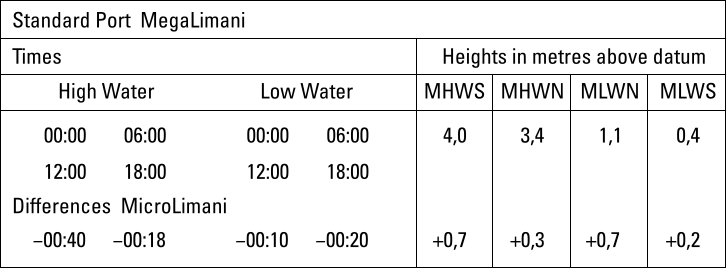


Rya Navigation Courses Chapter 7 Tide Prediction From Charts And Tables
Rise and fall method Introduction to Drawing 23 Table 31 Height of Instrument Method According to the above table three stations viz, A, B and C have been chosen The RL at station A which is called Bench Mark (BM) is known/assumed to be equal to The instrument has been shifted to 'B' and back sight at 'A ' isFill in The Missing Readings of a Level Book And Calculate Reduced levels of All the Points Rise And Fall Method Fill in The Missing Readings of a Level BookDec 05, 12 · 3) Find out the reduced level of each point by adding the rise to or subtracting fall from the RL of a proceeding pointObservation tableStation Reading Rise Fall Reduced Remarks BS IS FS Level Arithmetic check The difference between the sum of back sight and the sum of fore sight= difference between the sum of rise and the sum of fall
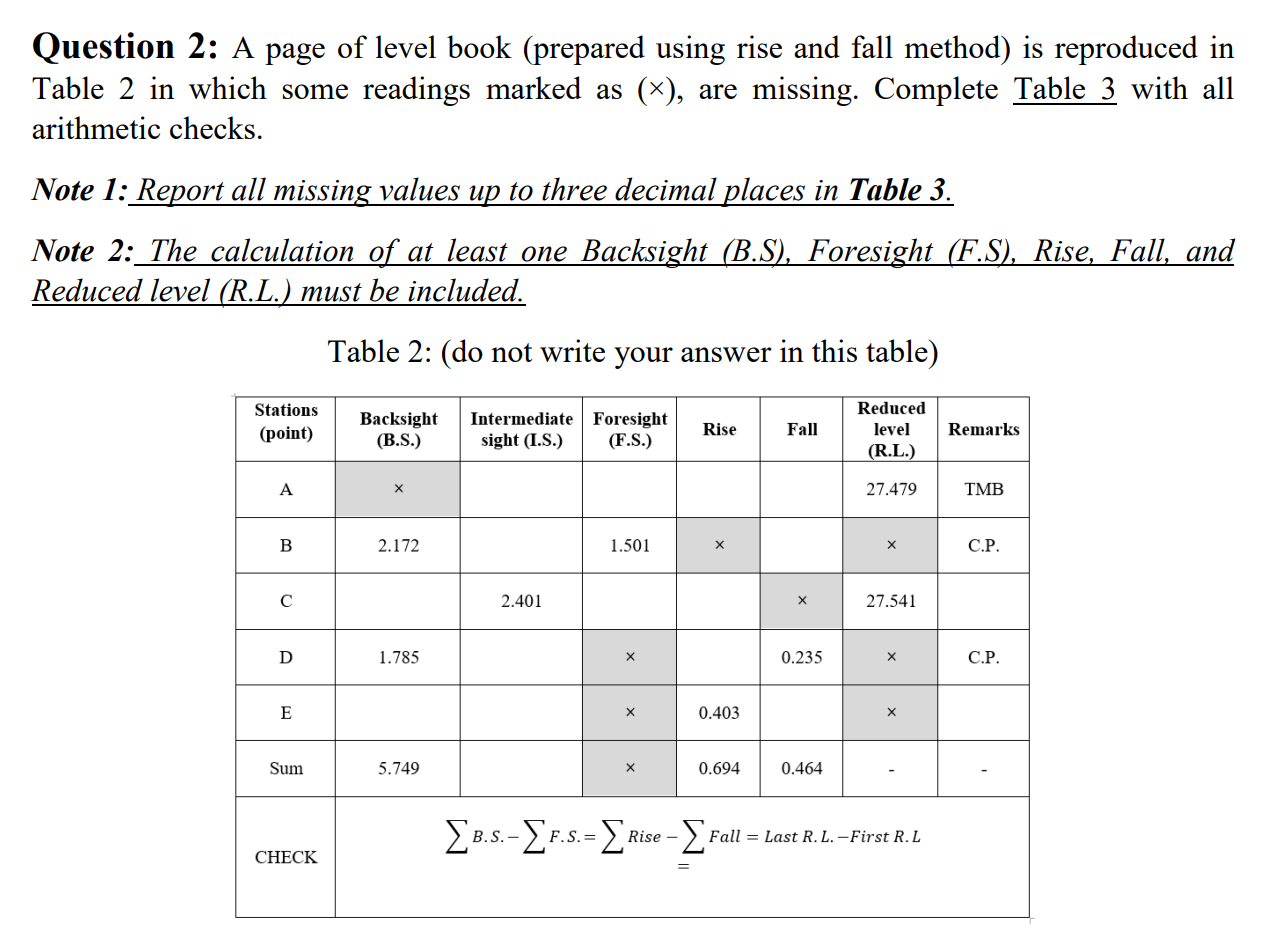


Solved Question 2 A Page Of Level Book Prepared Using R Chegg Com


4 2 Establish
Title Microsoft Word Exceldata&formulasdoc Author Karl Created Date 3/6/10 PMJan 07, 18 · Rise and Fall Method It consists of determining the difference of elevation between consecutive points by comparing each point after the first that immediately preceding it The difference between there staff reading indicates a rise fall according toQuestion 11 Reduce The Levelling Table Using The Rise And Fall Method (12) ADJUSTED FINAL POINT BS IS FS RISE FALL RL CORR HEIGHT HEIGHT BM1 1,432 1254,540 1254,540 SV 1,623 1,762 SV40 0,962 0,865 SV60 0,593 1,662 SV80 0,965 1272 SV100 1,368 0,617 SV1 1,986 1,869 BM5 1,487 1253,950 1253,950
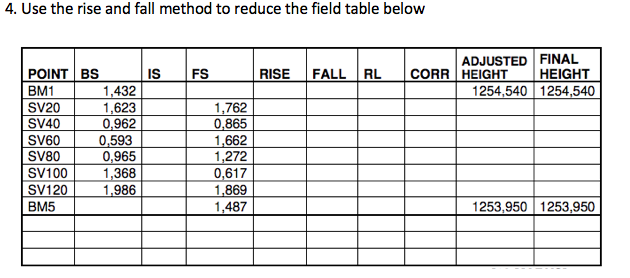


Solved 4 Use The Rise And Fall Method To Reduce The Fiel Chegg Com
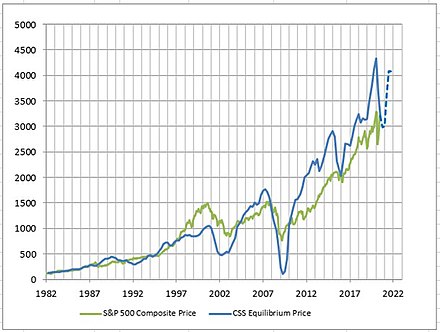


Stock Valuation Wikipedia
Compute The Reduced Levels Of The Following Table (Level Computation) Using The Rise And Fall Method A) Perform The Adjustment (Assume Reduced Level Of BM1= MPD) B) Access Whether This Survey Fulfill The Accuracy Of The Work 5 Vn Mm ( Marks) IS FS BS 1721 1585 1354 1475 10 Station BMI Pt A Pt B TP1 Pt C Pt D Pt E TP2 Pt F PtOct 10, 19 · this short tutorials provides education about the rise and fall table in land surveying here we will learn how do we solve the rise and fall tablethe purpose of solving this table is to calculate the reduced level of each point taken at staff rod using leveling machine to calculate the reduced level of each point we calculate the rise and fall of points then for reduced level weDec 05, 16 · 9 In brief, Fall (F) = Foresight (FS) – Backsight (BS) Fall (F) = Intermediate sight (IS) – Backsight (BS) Rise (R) = Backsight (BS) Foresight (FS) Reduced Level (RL) = Precede Reduced Level Rise (R) Reduced Level (RL) = Precede Reduced Level Fall (F) Calculation checks, Σ BS Σ FS = Σ R Σ F = Last RL



Practical Surveying Laboratory Surveying Laboratory Levelling H I And Rise And Fall Method 4 Theodolite Surveying 5 Tangential And Stadia Tacheometry 6 Pdf Document



Solved Q3 10 Marks For A Leveling Process Booked In Th Chegg Com
This calculator uses the "average end area" method to determine the volume of a trapezoidal shaped dam bank Level reduction spreadsheet This simple "Excel" spreadsheet calculates reduced levels from raw survey data using the "rise and fall" method Data is entered in the same way as with a traditional survey bookCalculate the reduced levels of the points by rise and fall method Also find the gradient of the line joining the first and last point (5/1/10) 07 2 Q2 Following are the staff readings observed with a level First observation taken on TBM of RL m complete theUse either the Rise and Fall method or the Height of Plane of Collimation (HPC) method to reduce the data Use arithmetic checks to support your answer Station Point BS IS FS Rise Fall or HPC RL CH 1 TBM 0771 1,2 A 0802 1552 0 2 B 2311 5 2,3 C



Measuring Price Elasticity Of Demand 5 Methods



Value Averaging Spreadsheet ii
Levelling and surveying methods are also used for measurements of river channel and lake configurations Often, less accurate methods can be used for this work than for waterlevel recording stations, although the techniques are common 32 Definitions Differential levelling is the term applied to any method of measuring directly with a graduatedAnd return is the motion of the follower toward the cam center There are many follower motions that can be used for the rises and the returns In this chapter, we describe a number of basic curves Figure 611 Motion eventsRise and Fall Method In this method, the difference between consecutive points is calculated by comparing each point after the first with that immediately preceding it The difference of their staff reading indicates rise or fall according as any staff reading is smaller or greater than that at the preceding point
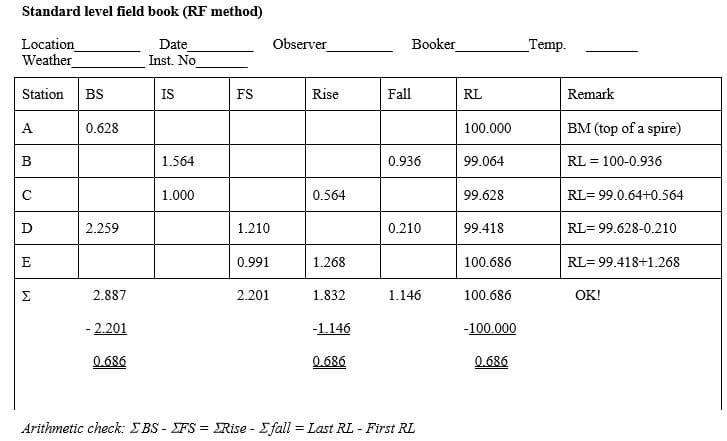


What Is Height Of Instrument And Rise Fall Method Of Levelling



Solved Q2 In A Surveying Practice For Levelling The Follo Chegg Com
Look at the table below Column 1 is the angle in degrees Column 2 is the rise over run percentage for that angle (The trigonometric definition for column 2 is the tangent of that angle times 100 It is also the grade for that angle) Column 3 is the rise over slope length (or hypotenuse) percentage for that angle (or sine of that angleCheck = ∑BS∑FS = ∑rise = ∑fall = first RL – last RL =5964=6916=2842=3794= =0952 0952 0952 4 The following consecutive readings were taken with a level and 5 m levelling staff on continuously sloping ground at common intervals of m


8 Topographical Surveys Direct Levelling



Rya Navigation Courses Chapter 7 Tide Prediction From Charts And Tables
/dotdash_Final_Breadth_Indicator_Aug_2020-01-8583b2497456412e8b9460117475a109.jpg)


Breadth Indicator Definition And Uses



Surveying I Ii Lecture Notes Study Materials And Important Questions Answers By Brainkart Com Issuu


How To Create A Waterfall Chart In Excel And Powerpoint



Rise And Fall Method Surveying Table Page 2 Line 17qq Com



Rise And Fall Method Surveying Levelling Survey Surveying Leveling Calculations Youtube



Levelling In Surveying



Rise And Fall Method In Levelling Surveying Of Rise And Fall Method Youtube


Linear Surveys Levelling
:max_bytes(150000):strip_icc()/dotdash_Final_Understanding_How_Options_Are_Priced_Aug_2020-01-c5699fc51f48461fa3413e4e97049857.jpg)


Understanding How Options Are Priced
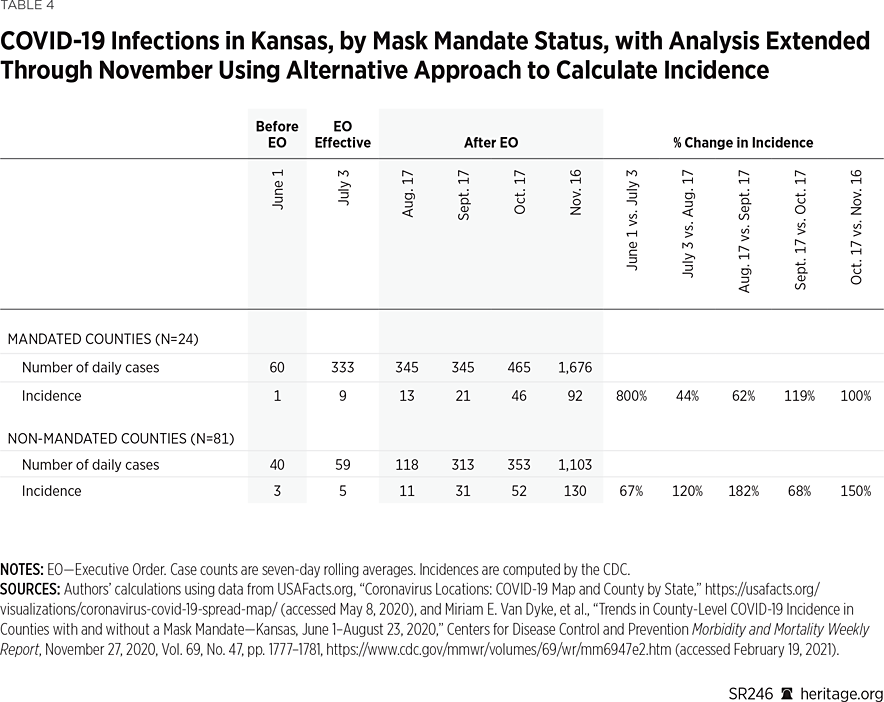


Yvzjthpfubkalm


Levelling Gerneral Priciples
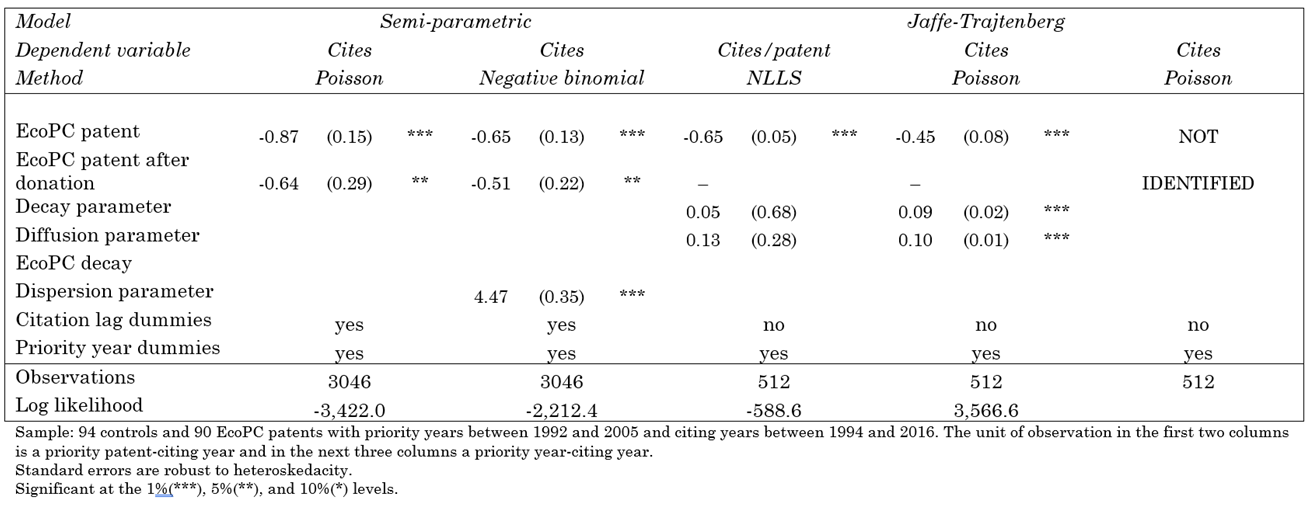


Pledging Patents For The Public Good Rise And Fall Of The Eco Patent Commons Published In Houston Law Review



How To Predict If A Stock Will Go Up Or Down Beginners Guide Getmoneyrich



Rise And Fall Method Tutorial 2 Youtube


Twentieth Century Morality The Rise And Fall Of Moral Concepts From 1900 To 07
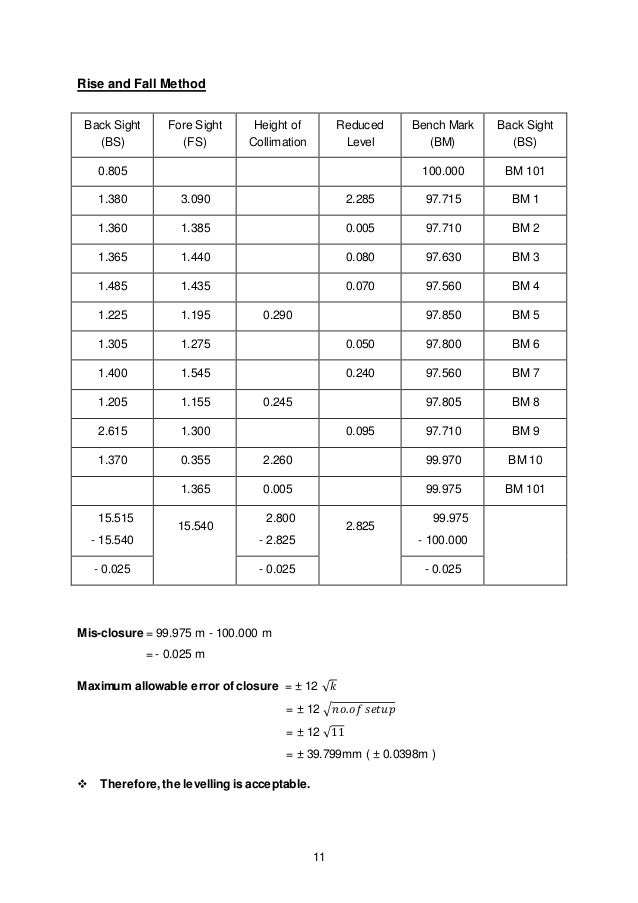


Assignment 1 Levelling



How To Use Clothing Size Charts Sizecharter



Construction Technology 2 006 Construction Technology Past Exam Paper Docsity



Rise And Fall Method In Levelling Determination Of Reduced Levels Surveying Youtube



Solved Question 4 Plo2 Clo2 C3 15 10 5 Data Obtained Chegg Com



Levelling



Correlated Ihs Identified By The Spearman Method Download Table



Rise And Fall Method Numericals Of Rise And Fall Method



Rise Fall Method In Surveying Rl Calculations From Autolevel Data Youtube
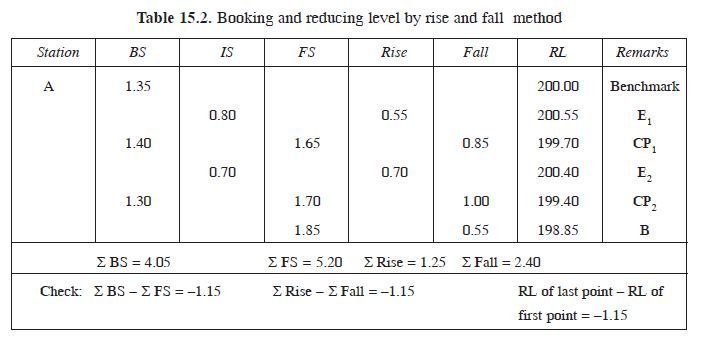


Fly Levelling Civil Engineering


Surveying And Leveling Lesson 10 Simple Levelling And Fly Levelling Methods



The Rise And Fall Of Philosophy Of Education An Institutional Analysis Semantic Scholar
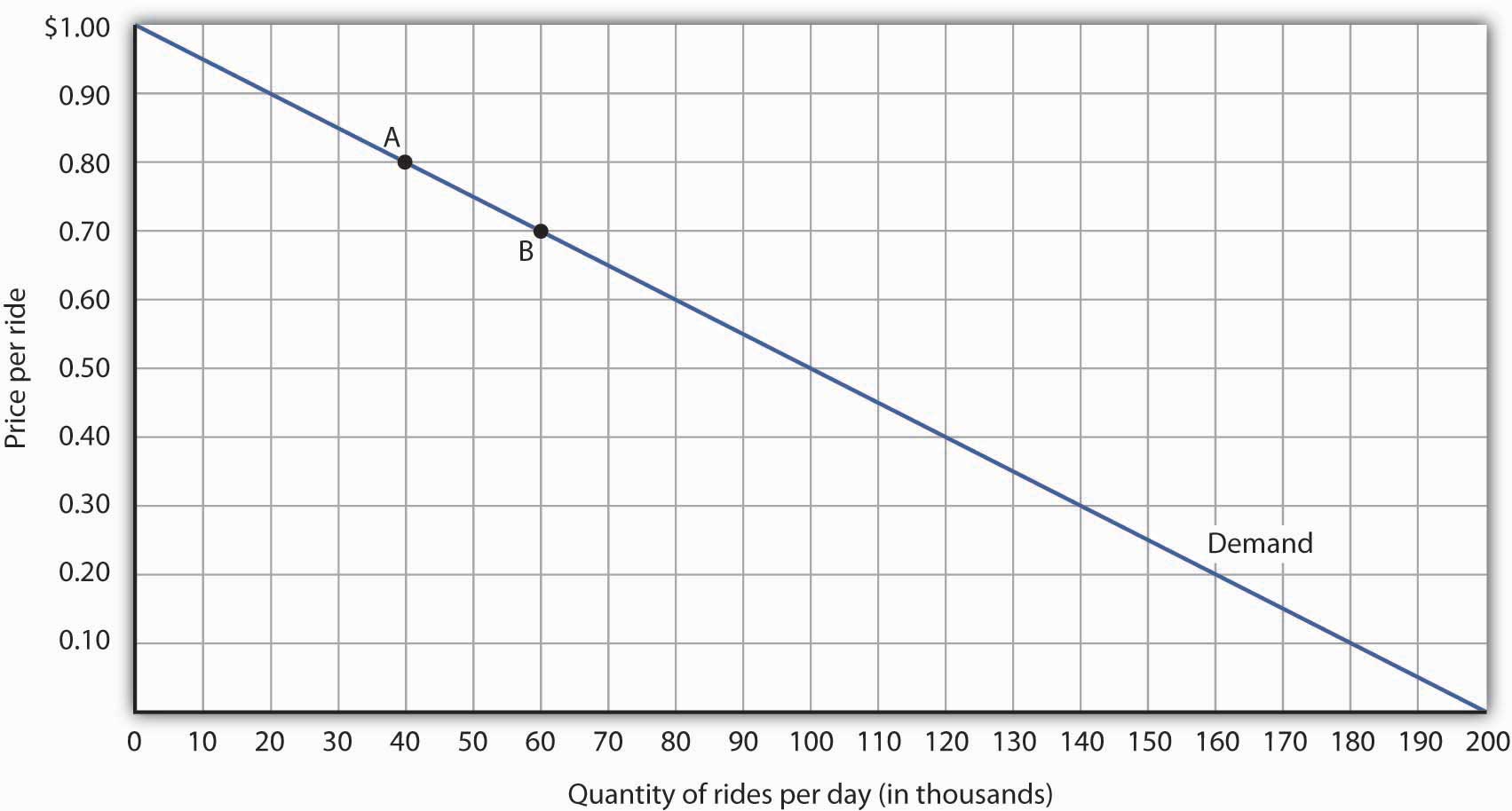


5 1 The Price Elasticity Of Demand Principles Of Economics
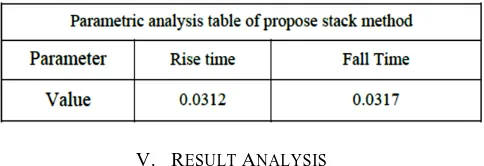


To Improve Noise By Reducing Rise Time Fall Time For Dynamic Cmos Logic With Stack Techniques



Ffs 102 Forest Surveying And Engineering 1 2 Theory Introduction Principles Of Surveying Engineering Surveying Principles
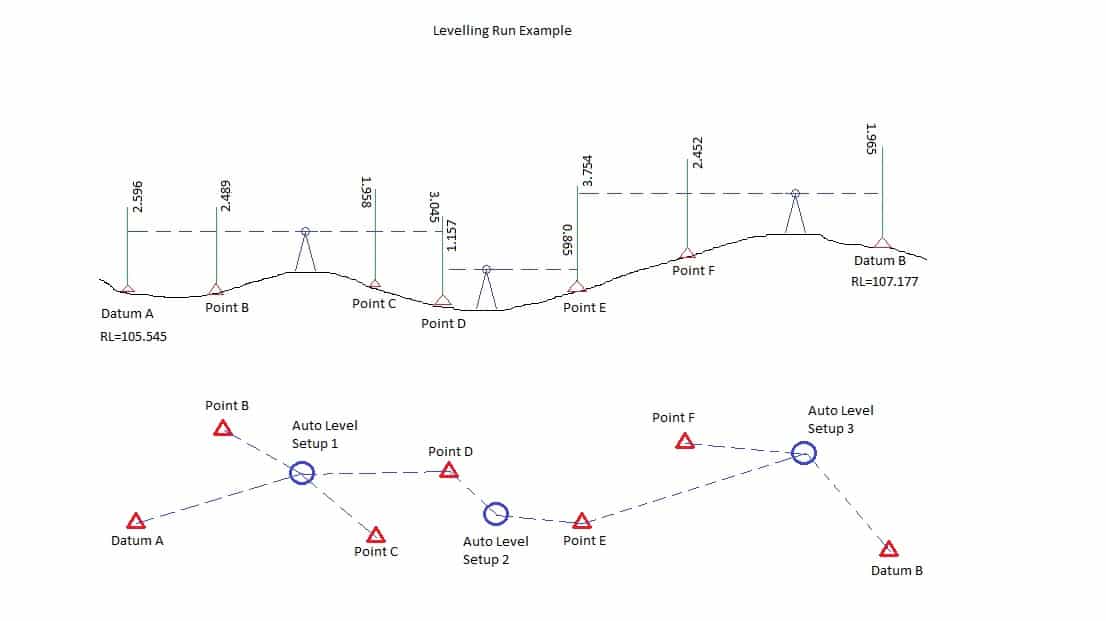


Methods For Booking A Levelling Run The Rise And Fall Method Lssltd Net



Demographic Perspectives On The Rise Of Longevity Pnas
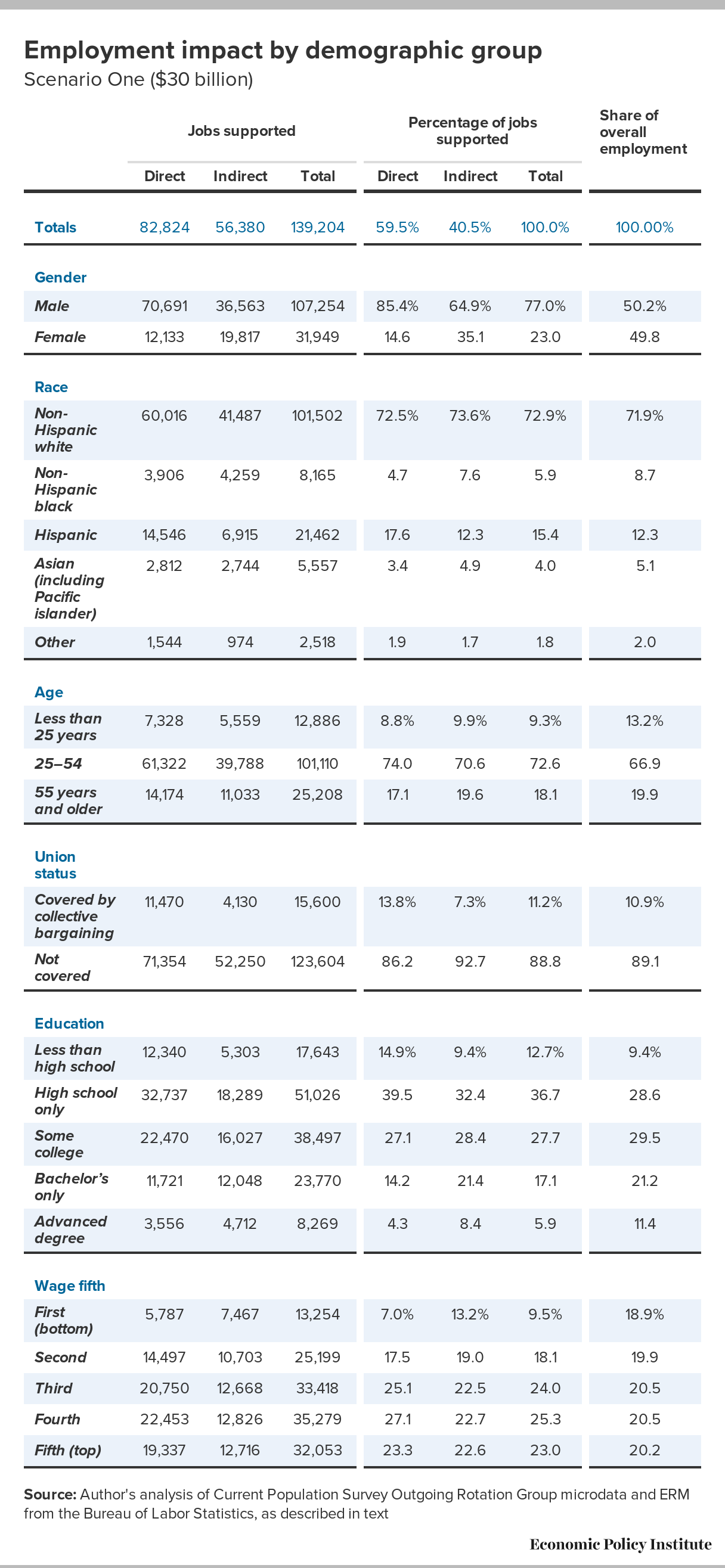


The Short And Long Term Impact Of Infrastructure Investments On Employment And Economic Activity In The U S Economy Economic Policy Institute
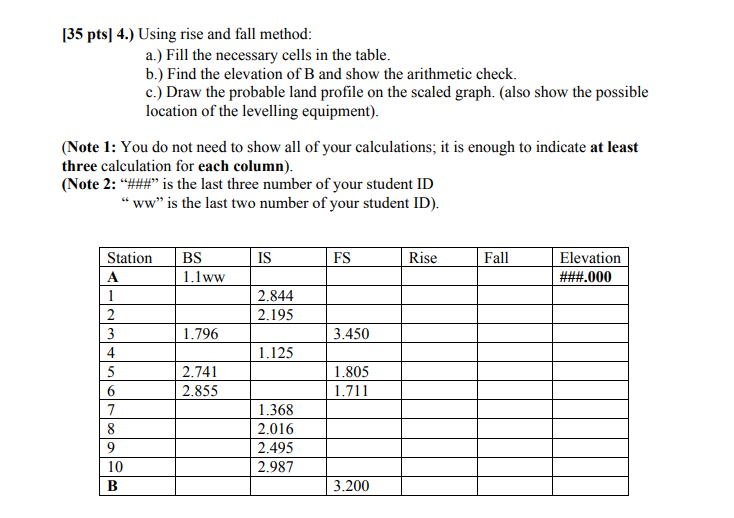


Solved 35 Pts 4 Using Rise And Fall Method A Fill Chegg Com



Correlated Ihs Identified By The Spearman Method Download Table



Compare Between Height Of Instrument Method And Rise And Fall Method Youtube


World Population Growth Our World In Data



Population Growth Wikipedia
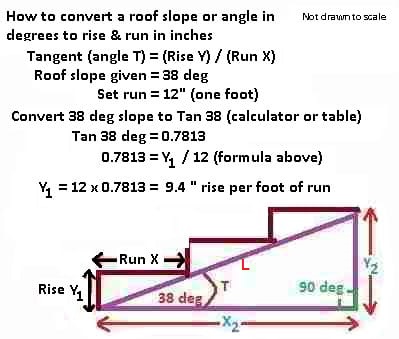


Roof Calculations Of Slope Rise Run Area How Are Roof Rise Run Area Or Slope Calculated


Product Prioritization Techniques A Map And Guided Tour
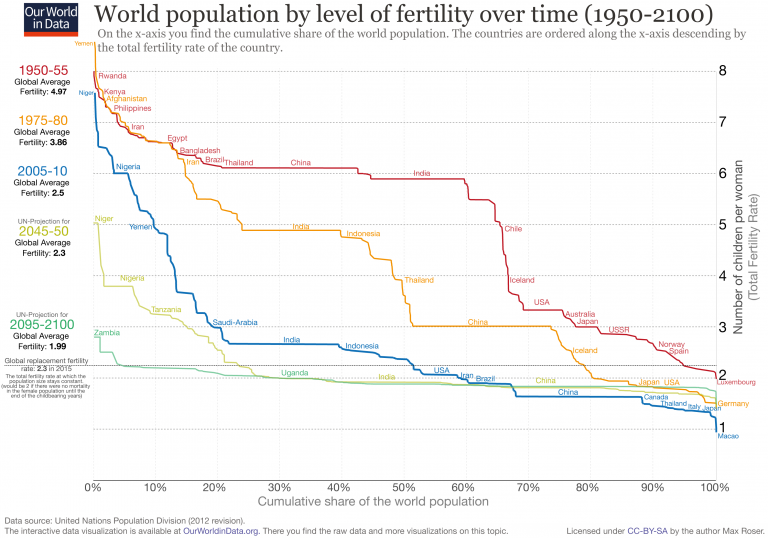


Fertility Rate Our World In Data
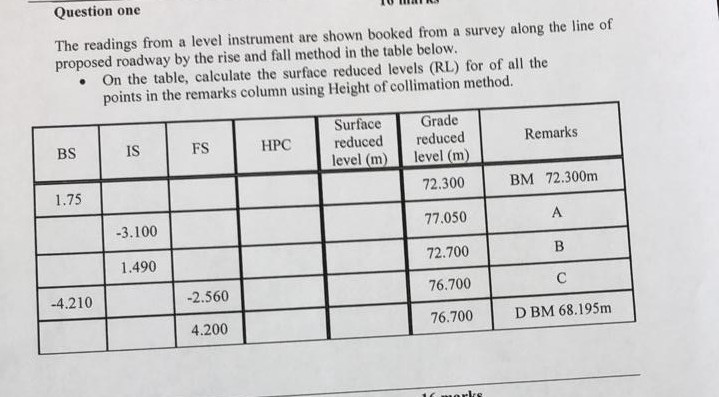


Solved Question One Proposed Roadway By The Rise And Fall Chegg Com
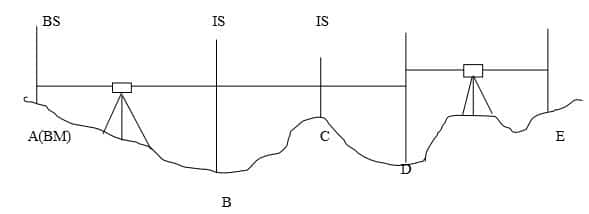


What Is Height Of Instrument And Rise Fall Method Of Levelling
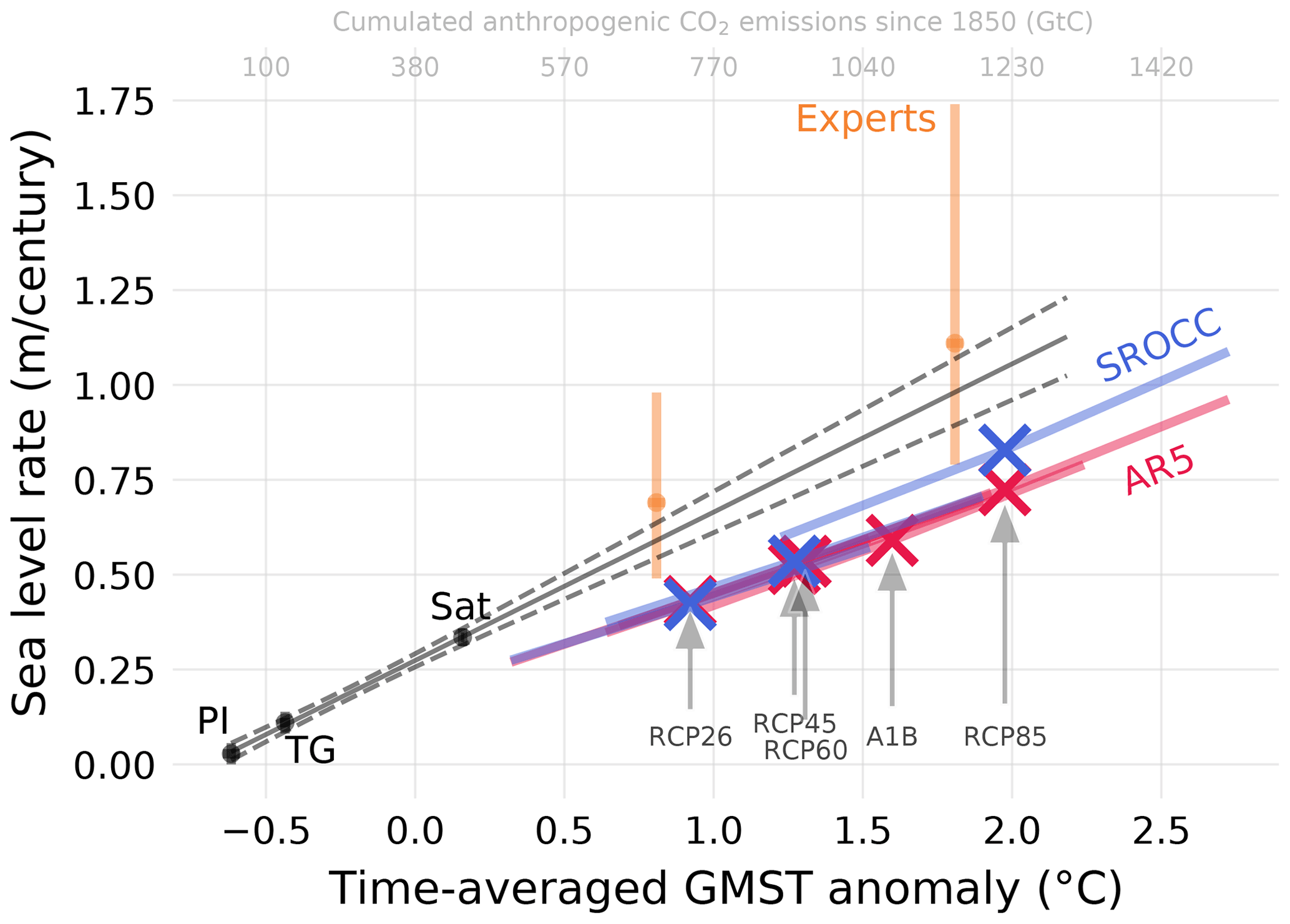


Os The Transient Sensitivity Of Sea Level Rise



Booking Calculations Rise Fall Method Ppt Video Online Download
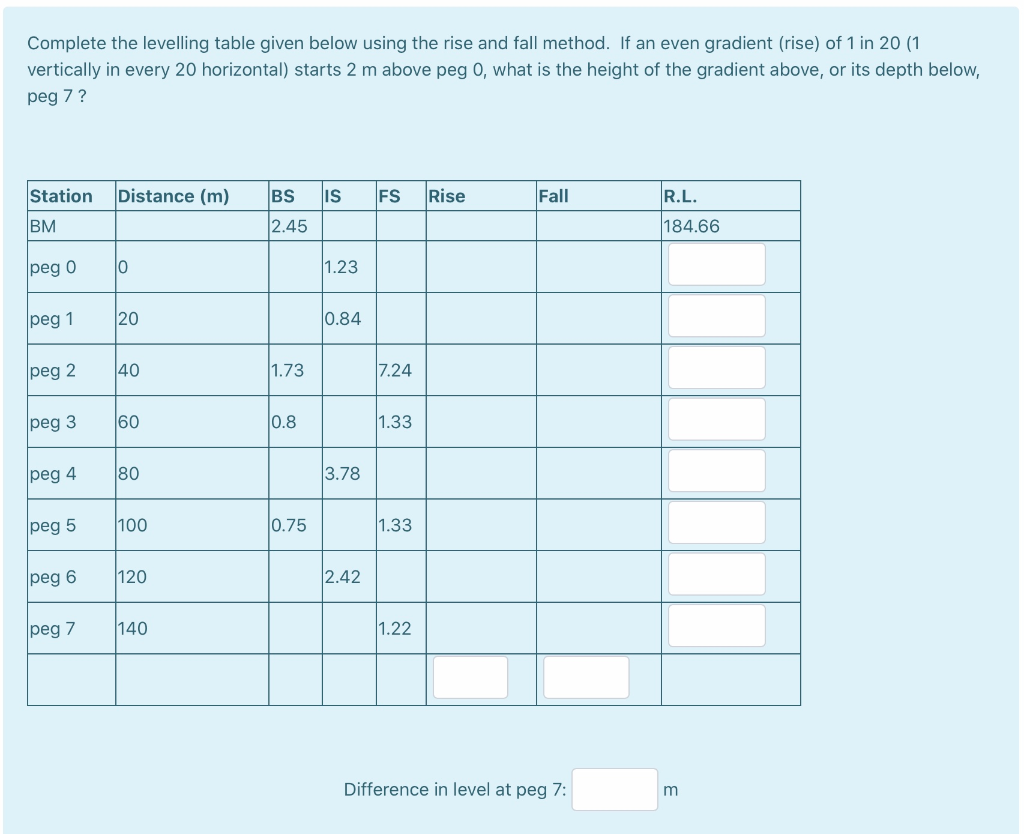


Solved Complete The Levelling Table Given Below Using The Chegg Com
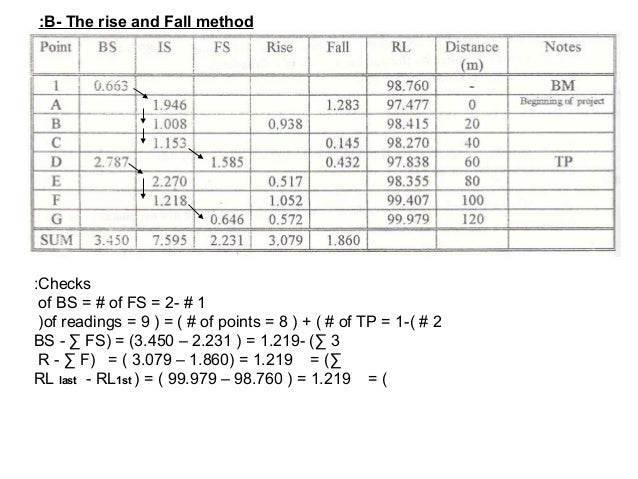


Levelling Survey


Name Class Date Asslggment 4 Table I Price Quantig Demanded 0 50 2 40 4 30 6 8 10 1 Refer To Table 1 Using The Midpoint Method What Is Course Hero
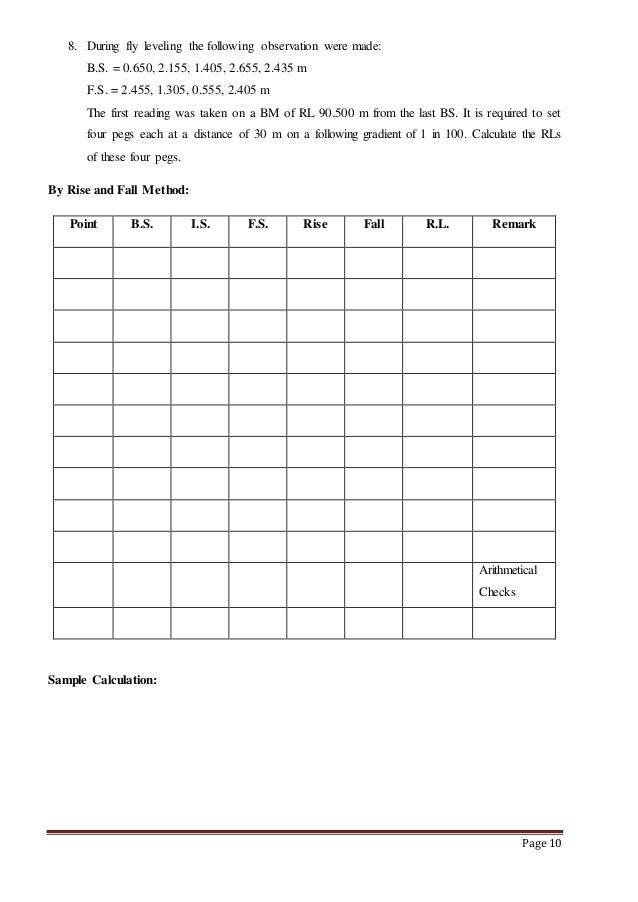


Levelling



Site Surveying Leveling


Levelling Calculations Made Easy Rise And Fall Method Formulas That Work Land Surveyors United Global Surveying Community
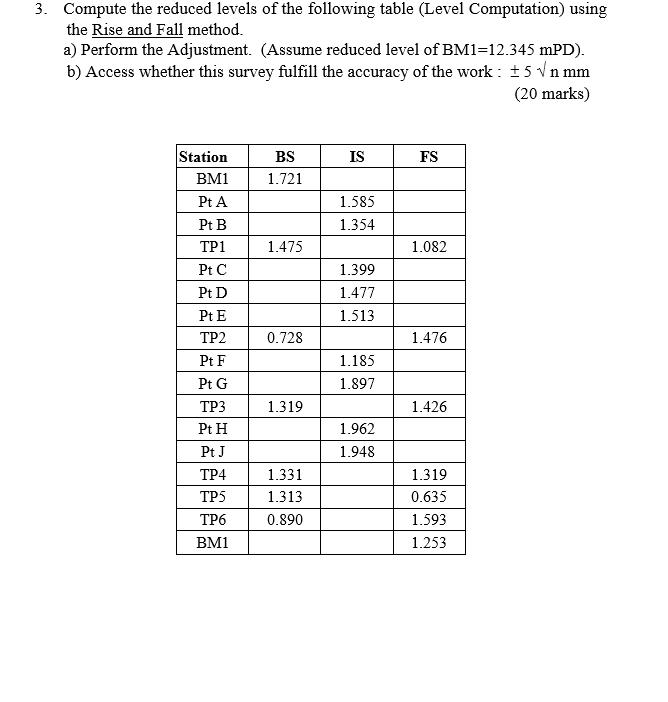


Solved Compute The Reduced Levels Of The Following Table Chegg Com



The Rise Of The Telecommuter And The Fall Of Community False Promises Semantic Scholar



Lecture Ppt Download



Brief Overview Of Rise And Fall Table In Land Surveying Construction Cost



Solved Q2 In A Land Surveying Practice In Muscat The Da Chegg Com



Pdf The Rise And Fall Of Type Ia Supernova Light Curves In The Sdss Ii Supernova Survey Semantic Scholar


8 Topographical Surveys Direct Levelling



Levelling Rise And Fall Method Survey Youtube
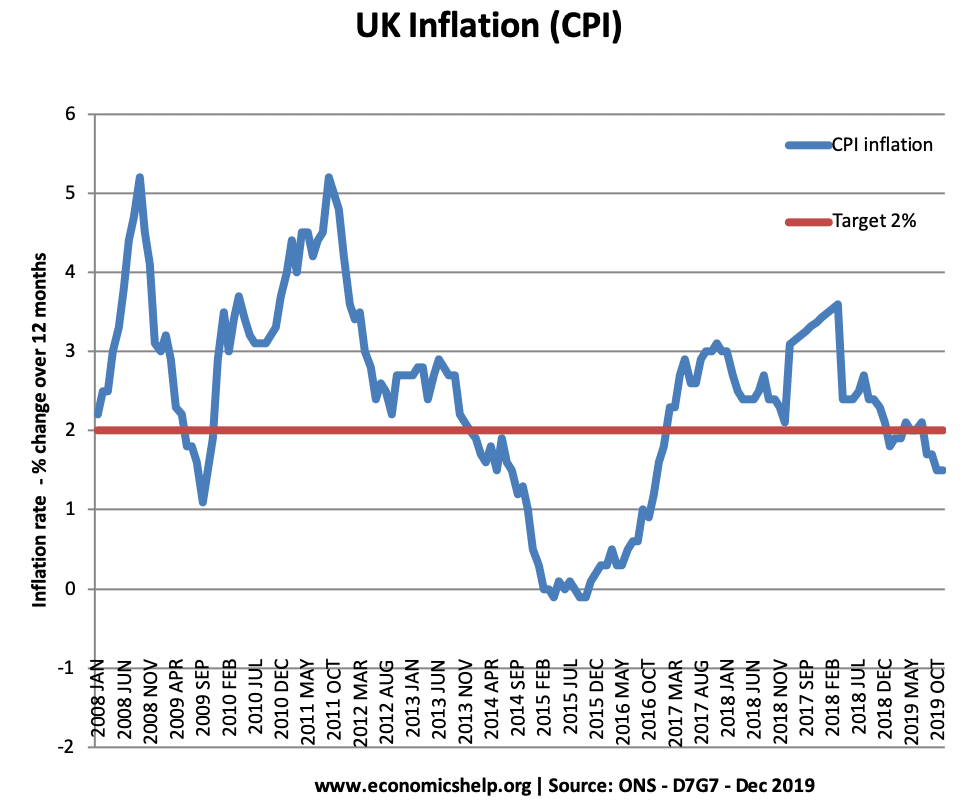


Uk Inflation Rate And Graphs Economics Help



Complete Procedure For Performing Leveling Engineersworld



Rise And Fall Method Numericals Of Rise And Fall Method



Engineering Surveying Assignment 1 Studocu
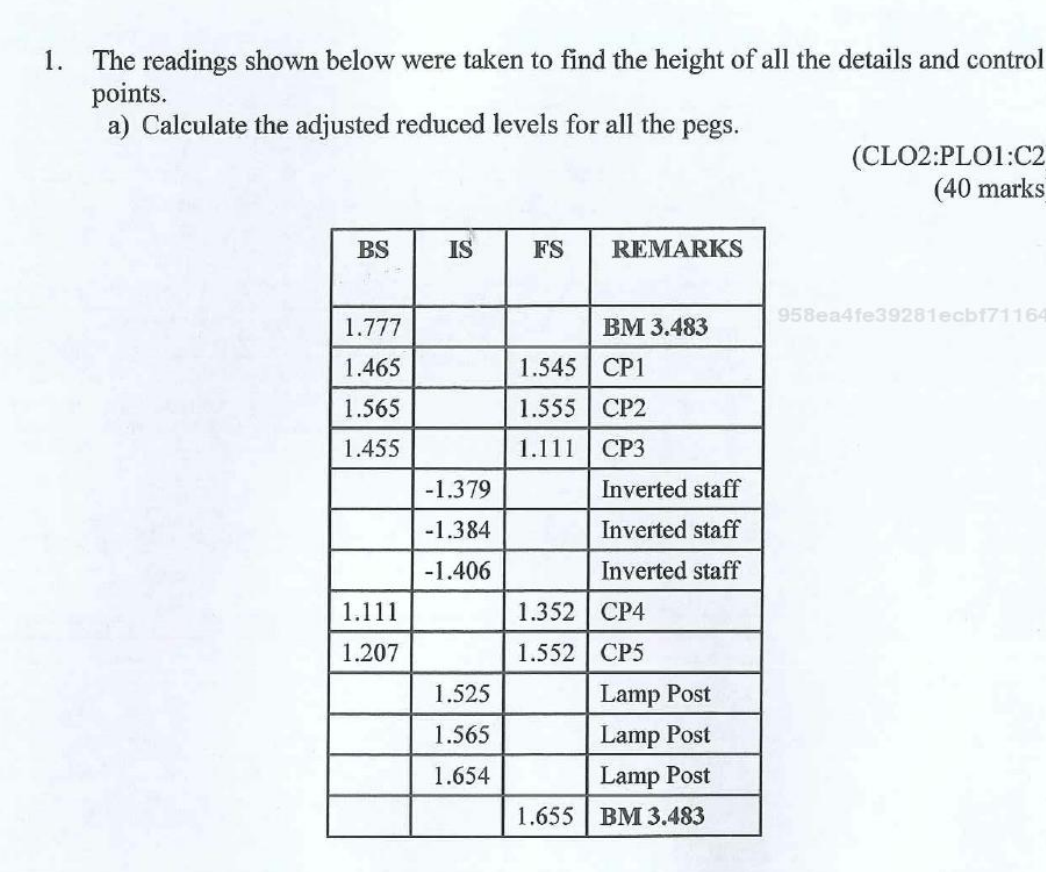


Solved Answer The Question Using Method Of Rise And Fall Chegg Com
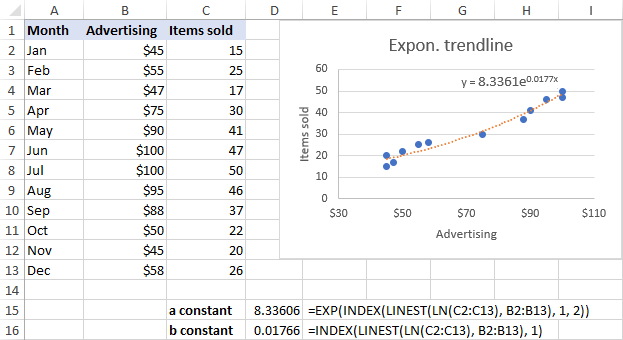


Excel Trendline Types Equations And Formulas



Labor Productivity For Selected Construction Industries



Magnetic Susceptibility Quincke S Method



Rise And Fall Method Surveying Table Page 1 Line 17qq Com



Ppt Booking Calculations Rise Fall Method Powerpoint Presentation Id 4142


コメント
コメントを投稿